The avian world presents an enchanting spectacle of birds perched gracefully on tree branches, seemingly defying gravity even as they slumber. The curious question arises: why don’t birds fall off trees while sleeping?
The answer unveils a fascinating blend of evolutionary adaptations and physiological mechanisms that ensure birds maintain their grip and equilibrium during rest.
From the specialized structure of their feet to the intriguing phenomenon of tendon locking, avian sleep on branches is a testament to nature’s ingenuity.
Exploring the ways in which birds manage to stay securely perched while asleep not only offers insights into their remarkable survival strategies but also serves as a reminder of the hidden marvels that define the intricate dance of life in the natural world.
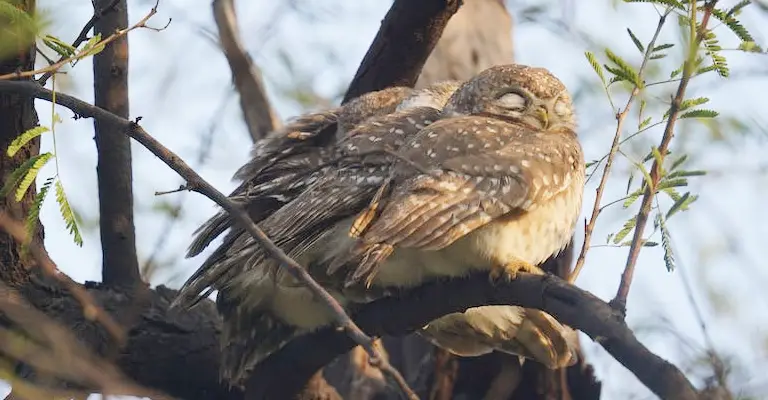
Why Don’t Birds Fall Off Trees While Sleeping?
Birds are amazing animals that can sleep on trees without falling off, even when they are in a deep sleep.
Here are some points to explain how they do it:
Talons
Birds have sharp claws called talons that help them grasp branches or other perches. When a bird lands on a branch, its talons automatically bend and lock around the branch.
This is called an involuntary reflex, which means the bird does not have to consciously control it. The talons will not release until the bird straightens its legs or flies away.
This way, the bird can sleep without worrying about losing its grip.
Brain
Birds can also control how deeply they sleep by using their brain. They can keep one half of their brain awake while the other half sleeps.
This is called unihemispheric slow-wave sleep, which means only one hemisphere of the brain is in a slow-wave or deep sleep state. The awake half of the brain can monitor the surroundings and alert the sleeping half if there is any danger.
The bird can also keep one eye open, which is connected to the opposite hemisphere of the brain.
For example, if the right eye is open, the left hemisphere of the brain is awake, and vice versa.
Balance
Birds also have a good sense of balance that helps them stay on trees while sleeping. They have a special organ in their hip called the lumbosacral organ, which detects changes in gravity and posture.
The lumbosacral organ sends signals to the muscles and nerves that control the legs and tail, which help the bird adjust its position and maintain stability. The lumbosacral organ works together with the inner ear, which also helps with balance and orientation.
These are some of the main points about how birds sleep on trees without falling off. They use their talons, their brain, and their balance to stay safe and comfortable while sleeping.
They are both fascinating and impressive animals that have adapted to their environments in different ways.
How Do Birds Maintain Balance?
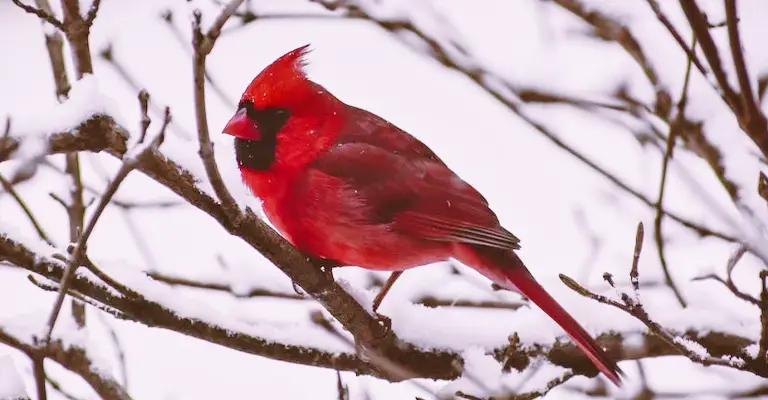
Of course, here’s a breakdown with descriptions for each point:
Foot Anatomy
Birds’ ability to maintain balance is closely linked to their foot anatomy. Most birds have three forward-pointing toes and one backward-pointing toe. This arrangement allows them to grasp branches securely.
When they land on a perch, their toes automatically curl, locking them in place.
Tendons and Ligaments
The tendons and ligaments in a bird’s legs play a crucial role in maintaining balance.
These are spring-loaded mechanisms that automatically tighten when the bird’s leg bends, causing the toes to grip the perch. This reflex action ensures a firm hold even when the bird is relaxed.
Wing and Tail Movements
Birds use their wings and tail feathers as stabilizers. Adjusting the position of these appendages helps birds counterbalance their body weight.
For instance, a bird might spread its wings slightly to catch the wind and create resistance that prevents tipping off the perch.
Active Adjustments
Birds make constant micro-adjustments to their posture and grip while perched. They shift their weight, slightly change the angle of their feet, or subtly move their wings or tail feathers to maintain stability.
These active corrections help them adapt to variations in the perch and external factors.
Perch Choice
Birds often choose perches that match their body size and weight. Selecting an appropriate perch minimizes the effort required to maintain balance.
Larger birds might prefer thicker branches that offer a secure grip, while smaller birds might opt for narrower perches.
Learning and Experience
Balancing is a skill that birds develop through experience and practice. Juvenile birds spend time practicing perching and navigating various surfaces, enhancing their coordination and balance over time.
Environmental Adaptations
Different environments require different balancing strategies. Birds that perch on swaying branches, like those in windy areas, have more flexible and adaptable balance mechanisms.
Waterbirds, for example, have adaptations for maintaining balance on floating surfaces.
Sensory Inputs
Birds use sensory feedback from their feet and body to gauge their balance. Nerves in their feet send signals to their brain about the position of their toes and the pressure on the perch.
This sensory information helps birds make real-time adjustments to stay balanced. The complex interplay of anatomical adaptations, reflexes, active adjustments, and sensory inputs underscores the marvel of how birds navigate their perching habitats with remarkable grace and stability.
Which Birds Are Good At Bird Balance On A Branch?
Birds are amazing animals that can stay on trees without falling off, even when they are sleeping.
Here are some points to explain which birds are good at balancing on a branch and how they do it:
Hummingbirds
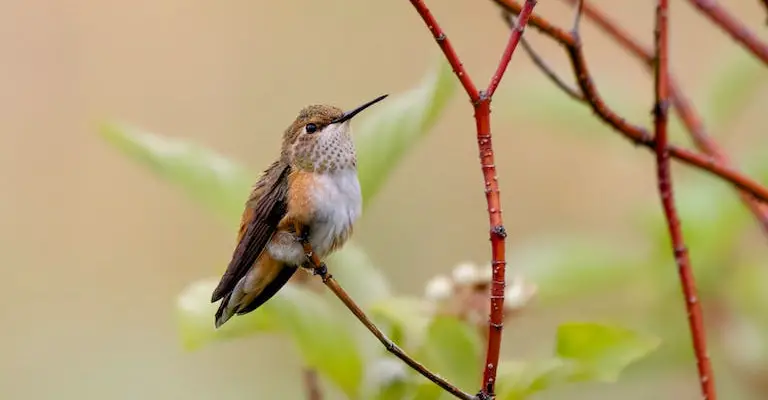
Hummingbirds are the only birds in the world that can fly backward for a substantial amount of time. This is because their wings’ muscle structure is essentially a ball and socket joint, which allows them to move their wings up, down, backward, and forwards.
Not only this, but they can also rotate their wings to form a figure of eight. This gives them incredible control and maneuverability in flight, which they use to hover over flowers and feed on nectar.
Hummingbirds can also fly sideways, upside down, and even do somersaults in the air. They are truly the masters of balance and agility.
Parrots
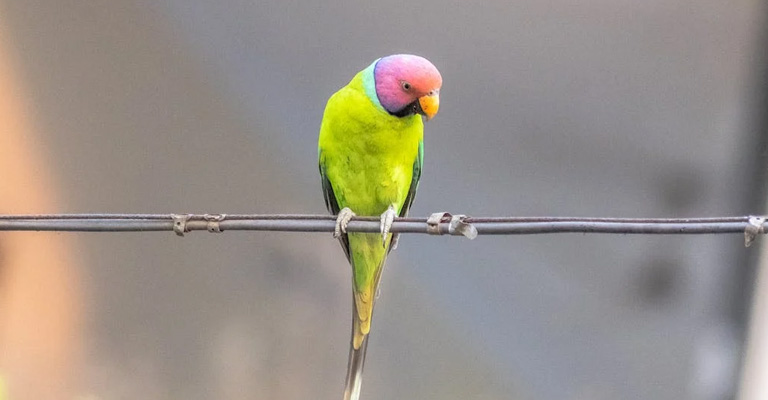
Parrots are intelligent and playful birds that can hang upside down on a branch for a snooze or a snack. They have strong feet with four toes, two facing forward and two facing backward, which help them grip the branch firmly.
They also have curved beaks that can act as a third foot, allowing them to hold onto nuts or fruits while they eat. Parrots can also use their beaks to climb up or down branches or to swing from one branch to another.
Woodpeckers
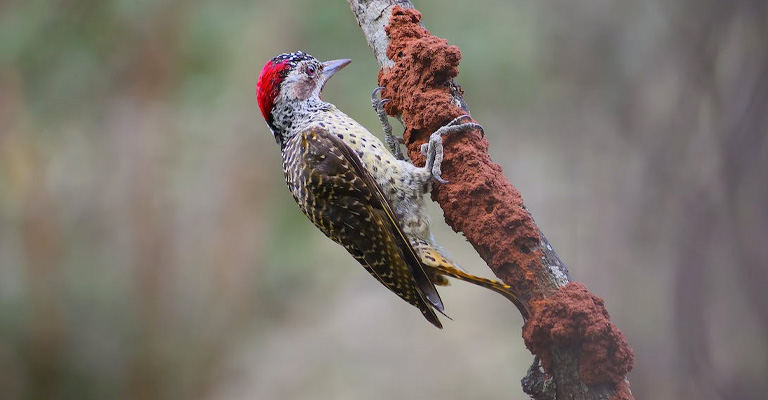
Woodpeckers are specialized birds that can drill holes in trees with their powerful beaks. They have stiff tail feathers that act as a prop, supporting their weight and keeping them balanced on the tree trunk.
They also have two toes facing forward and two toes facing backward, which help them cling to the bark. Woodpeckers can move up, down, or sideways on the tree, using their beaks and feet as tools.
These are some of the main points about which birds are good at balancing on a branch and how they do it. They use their talons, their beaks, their wings, and their tails to stay safe and comfortable while perching.
They are both fascinating and impressive animals that have adapted to their environments in different ways.
FAQ
No, birds have adaptations that prevent them from falling off trees while sleeping. These adaptations include tendon-locking mechanisms and specialized feet that allow them to maintain a secure grip on branches even when their muscles are relaxed.
Tendon locking is a mechanism where a bird’s foot tendons automatically tighten and lock when the bird bends its legs to perch. This ensures that the bird remains securely anchored to the branch, even during sleep when its muscles relax.
Birds have flexor tendons in their legs that automatically engage when they perch.
When they bend their legs to grip a branch, the tendons lock in place, effectively preventing the bird from losing its grip even when it’s asleep and its muscles are relaxed.
Tendon locking is a common adaptation in many perching birds.
However, not all birds rely solely on this mechanism. Some birds, like waterfowl, have adaptations that allow them to sleep while floating on the water without falling.
Apart from tendon locking, birds have specialized feet with adapted talons that help them maintain a strong grip on branches.
Additionally, some birds, like raptors, have a gripping mechanism that allows them to hold onto branches even when they are unconscious during sleep.
Conclusion
The seemingly magical ability of birds to remain perched while sleeping finds its foundation in a tapestry of evolutionary marvels.
From talon adaptations to tendon-locking mechanisms, these avian adaptations showcase the ingenious ways nature has sculpted life to harmonize with its environment.
The convergence of anatomy, physics, and evolution is evident in the secure slumber of birds on branches. The enigma of why birds don’t fall off trees while sleeping unravels into a story of adaptability, finely honed over eons.
This serves as a reminder that every element of an organism’s existence, even its restful moments, is a product of the ceaseless dance between nature’s challenges and life’s creative solutions.